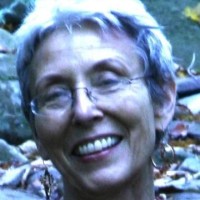“Can you even trust a person who has a pet fly?” one of my friends commented after the vice-presidential debate last week. She was thinking about the fly that sat forever in the vice president’s snowy white hair. I had a lot of bones to pick with Mike Pence regarding that debate, but the fly was not one of them.
I wrote back to my friend, saying that she shouldn’t knock pet flies. “I used to have a pet fly,” I said, “although I never took mine out with me.”
I had pet flies when I was living in the ashram. We weren’t supposed to keep cats or dogs, but flies there were aplenty. They hibernated through the frigid Northeast winters, and in the spring, when the weather started to warm, they would suddenly appear, trapped in the plastic-ed windows. They’d start buzzing, and I’d let them out. One always stuck around. When people came to see me in my office, they’d complain and ask, “Why don’t you kill it?” I’d say, “That’s Charley, my pet fly.”
I did not have a remarkable relationship with any of the Charleys, but I did once encounter a fly with whom I had a surprising conversation. This happened right after I read a book I still have, some fifteen years later: Kinship with All Life by J. Allen Boone. The book goes into the author’s relationships with various animals: dogs, snakes, ants, and I don’t remember what all. But I do recall quite vividly that the final six chapters of this modest tome describe the profound friendship the author developed with Freddie the Fly, a Musca domestica with whom he lived in Hollywood for a period of about six months. He writes:
“Wherever I went in the house, Freddie would come along too and share as best he could in the activity, often riding on one of my shoulders, sometimes flying ahead of me doing acrobatics. If I were in a hurry and raced through the rooms, he would always shoot ahead and show me how little accomplished I really was in speed and agility. If I suddenly stopped, he would usually make a few observation loops and return to my shoulder.”
One day, immediately after finishing this book, I had taken my lunch outside so that I could sit by myself and think through a particular problem I was facing. I put my plate on a table in the shade of tree, and then noticed that a fly was standing on the table, across from where I had just sat. Images of Freddie the Fly in my mind, I looked at this fly and thought, I came here to be by myself, and I would really appreciate it if you wouldn’t buzz my face or try to eat my food. I then considered that this wasn’t a very gracious communication. I selected a small spoonful of my lunch—a bit I felt would be most appealing to a fly—and put the food directly onto the table close to where this fly was, thinking, This is for you. I then forgot about the fly for a while; I ate my lunch and considered the problem I’d wanted to think about. When I was finished, I realized that the fly hadn’t bothered me once. I looked for him, and there he was—eating the food I had put out for him.
Thank you so much, I thought to the fly, and I added, You’re really amazing. I’ve never had a fly listen to me before.
The response was immediate. I heard, quite clearly: You’re pretty amazing, too. I’ve never had a person talk to me before.
My mind did not make that up. I knew it didn’t because I was truly surprised.
And the other thing I knew, on reflection, is that I would never again have reason to feel alone. It’s just one consciousness out there; we’re all a part of it.
And if someone wants to have a pet fly, more power to him. He still won’t get my vote.














